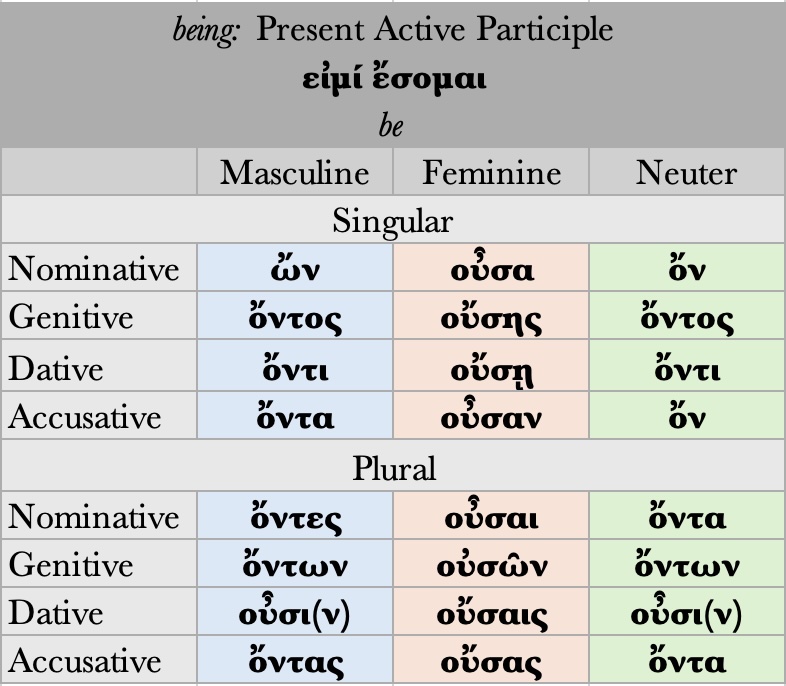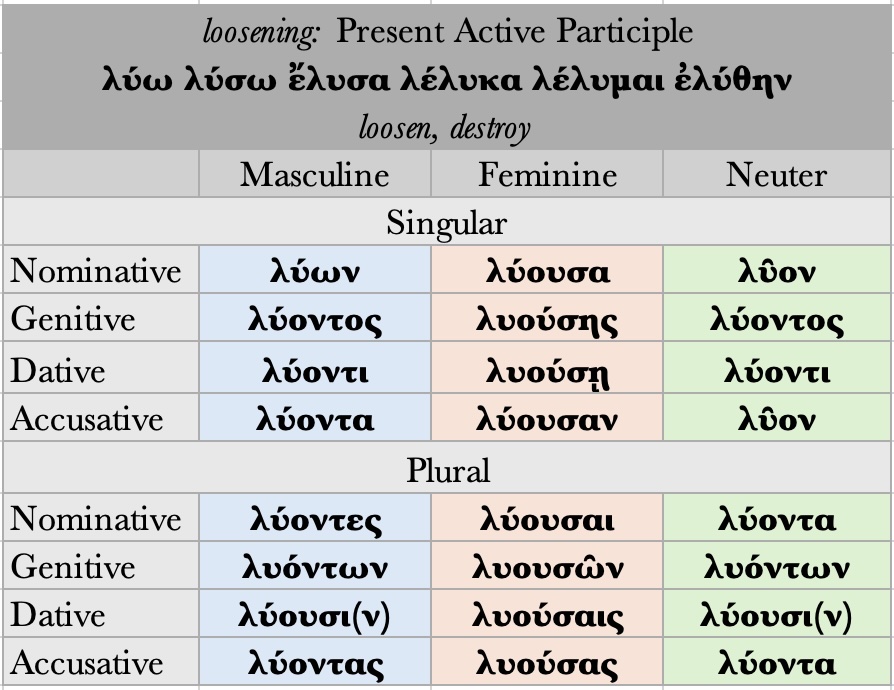37.7 Present active participles are built upon the PRESENT TENSE STEM. For –ω verbs, the thematic vowel ο is added before the ντ marker, producing the following pattern:
- present stem + οντ + 3-1-3 adjective endings
Predictable sound changes yield the following endings for the NOMINATIVE SINGULAR of THEMATIC PRESENT ACTIVE participles:
- Masculine: (-οντς→-ονς→) –ων
- Feminine: (-οντσα→-ονσα→) –ουσα
- Neuter: (-οντ→) –ον
On their own, these endings form one of the most common and useful participles:
- Read More
-
Note that the endings for the feminine are the same as those used by δόξα δόξης ἡ glory, judgment, opinion. Note also that the monosyllabic participles ὤν and ὄν do not decline according to the 3rd declension accent rules. Instead, the accent remains on the thematic vowel (S 304).
To form the present active participle of –ω verbs, simply add the inflected forms of ων, ουσα, ον as an ending.
- Read More
-
Note that the masculine forms are familiar; they match nouns such as ἄρχων, ἄρχοντος ὁ. In fact, ἄρχων is actually a participle that was often used SUBSTANTIVELY as a noun (the ruling man = the ruler).




